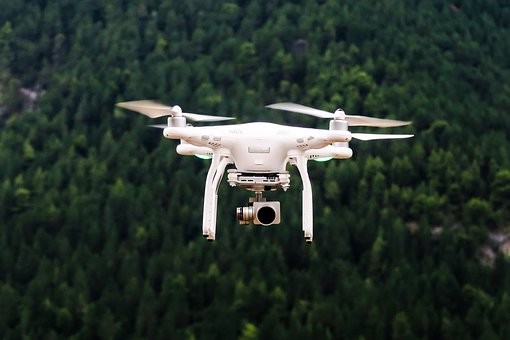ONTARIO'S RAPID FIRST RESPONSE

Drones make the news for all the wrong reasons. In the wrong or unskilled hands, they present threats to physical security and privacy that send most of us running for cover. But drones have immense potential for good. Globally, and locally, first responders are harnessing the power of drones to save lives. Emergency services are making tech for good a reality for all of us including:
- Traffic Crash Assessments: researchers at Purdue University studied the dangers of idling in a long line of highway traffic. Their research highlights that secondary car crashes, which are often worse than the original collision, can be reduced by quickly clearing that original collision site. While old school mapping a serious or fatal crash can take hours, launching a drone to map the scene allows software to complete data collection in minutes, allowing police officers to open the highway faster. Fast is good because being stuck at the back of the jam makes drivers vulnerable to approaching distracted drivers who don't clue in that traffic has stopped until it is too late. These 3D prints of crash scenes are generated by programming drones to fly a grid and record nearly 100 pics in two-second intervals. Not only do drones allow police officers to move traffic on busy highways and prevent secondary car crashes, they may also give first responders a first critical view of the scene. When seconds count, early and accurate assessments save lives;
- Drone Defibrillator Delivery: In rural Ontario, pilot projects have launched drones head to head against ambulances to remote locations to answer simulated cardiac arrest emergencies. While the ambulances struggled with traffic, the drones landed at the site three to four minutes before the ambulance even arrived. Those few minutes save lives in rural communities. In Renfrew, Ontario, paramedics are testing to see if drones can be flown reliably in our cold winter weather and deliver critical lifesaving tech. Knowing how to use the defibrillator, especially in stressful, life and death emergencies, is also being addressed through smartphone apps that could coach family and friends of the victim through the key steps; and
- Smart Glasses Technology: paramedics in our own Hastings-Quinte, Ontario, are exploring smart glasses that allow them to keep their eyes on the patient, transmit real time data to emergency room physicians and see through a camera on a drone. Paramedics can access standing orders and protocol, maintain their own personal safety by keeping a few paces back from a dangerous traffic scene, active shooting site, or other locked-down high risk location, and assist emergency rooms and disaster centres to triage the injured. Specialized trauma centres can literally see through the eyes of paramedics to best assist the critically injured. This technology holds huge promise for the injured of Eastern and Central Ontario and for emergency services throughout the world.
When employed wisely and with care, drones have immense power to do good in our communities. Data collection and harvesting is essential and integral to their performance. It is also critical that data privacy and rigorous cybertech measures are taken to safeguard the private information of the injured, particularly when that data is captured at what may be that person's most vulnerable and terrifying time of their life.
Experienced injury lawyers will also now know to request all data arising from a car crash or injury and not simply the ambulance call report and emergency room records.
Drone data has the opportunity to assist not only emergency responders and the injured at their greatest time of need, but also the injured when post-crash and injury they seek assistance and support from insurance companies for badly needed funding to get their lives back on track.
The practical and profound use of emergency drones cannot be underestimated. Their potential for good limitless.
Tech Savvy First Responders
Ontario Pioneers Life Saving Drone Technology
Drones Launch New Era for Victims & First Responders

